
 Ankara
Ankara
Removed from Unnamed collection
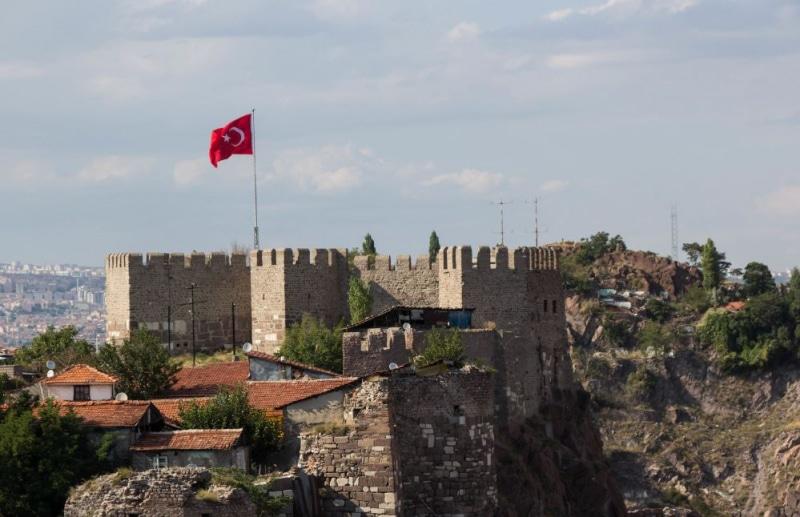
Removed from Unnamed collection
Ankara Castle 
Its construction date is not known exactly. It is believed to have been built by the Hittites, who had a military garrison in the city. But this idea has not been confirmed based on archaeological data. The Ankara Castle, which has been in the same place since the Hittites, was repaired many times during the Romans, Byzantines and Seljuk periods, consists of the inner castle that covers the high part of the hill and the outer castle that surrounds its surroundings (the outer castle has about 20 towers). The outer fortress turns the old city of Ankara.
The castle has experienced various periods in history. BC 2nd century After the Romans invaded Galatya (Ankara region) at the beginning, the city grew and fell out of the castle. Roman Emperor Caracaila İ.S. In 217 he repaired the walls of the castle. Between 222 and 260, Emperor Severus Alexander and Velerianus were defeated by the Persians and the castle was partially destroyed. After the second half of the 7th century, the Romans began to repair the castle. Emperor Constantine made an outsider in 688. IV. While Leon repaired the castle walls in 740, the walls of the inner castle also increased. Emperor Nikephoros and Emperor Basileios also repaired the fort in the 9th century. http://www.ankarakalesi.com/index.php?option=com_content&view=article&id=16&Itemid=4
Map
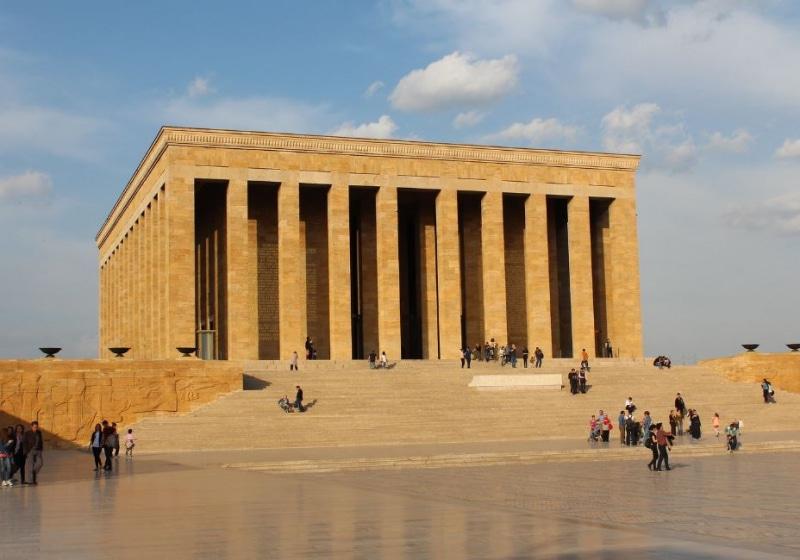
Removed from Unnamed collection
Anitkabir 
Before building of Anitkabir, Anittepe’s (Monument Hill ) name was Rasattepe (Observation Hill) because there was an observatory on this hill.
There were also tumultuous (graves) belonging to Phrygian civilization of 3rd Century BC on this hill. Archaeological excavations took place to remove these tombs after the decision was given to build Anitkabir on Rasattepe. Remains found on these excavations are on display in the museum of Anatolian Civilizations.
The first stage to start the construction was the expropriation of the land after deciding on the Anitkabir project. Actual construction of Anitkabir commenced on 9 October 1944 with a splendid ceremony by laying the first stone of the foundation. Construction of Anitkabir took nine years in four stages. Second stage construction, comprising the mausoleum and the auxiliary buildings surrounding the ceremonial ground, started on 29 September 1945 and completed on 8 August 1950.
The third stage was comprising the construction of the roads leading to the mausoleum, Lions’ alley, ceremonial ground, the mausoleum’s upper-level stone pavement, grand stairs, putting the big tomb stone in its place and installation of electricity, plumbing and heating systems. https://www.ktb.gov.tr/EN-103960/ankara---anitkabir-ataturks-mausoleum.html
Map

Removed from Unnamed collection
Museum of Anatolian Civilizations 
The Museum of Anatolian Civilizations, located in Ankara province of Turkey, is just like a gift for history lovers. This superb museum is the perfect introduction to the complex weave of Turkey's ancient past, with its beautiful artefacts picked from just the significant archaeological site in Anatolia.
Very few places in the world could give you a chronological understanding of mankind's mind-boggling progress. Anatolian Civilizations Museum in Ankara is one of them. Arranged as a chronological spiral, this museum will take you on a journey from 900 thousand years ago, to the present time.
The Museum of Anatolian Civilizations has on display priceless artefacts dating from the Paleolithic and Neolithic Ages and from Hittite, Phrygian, Urartu and Roman civilizations. https://www.goturkeytourism.com/things-to-do/anatolian-civilizations-museum-ankara.html
Map
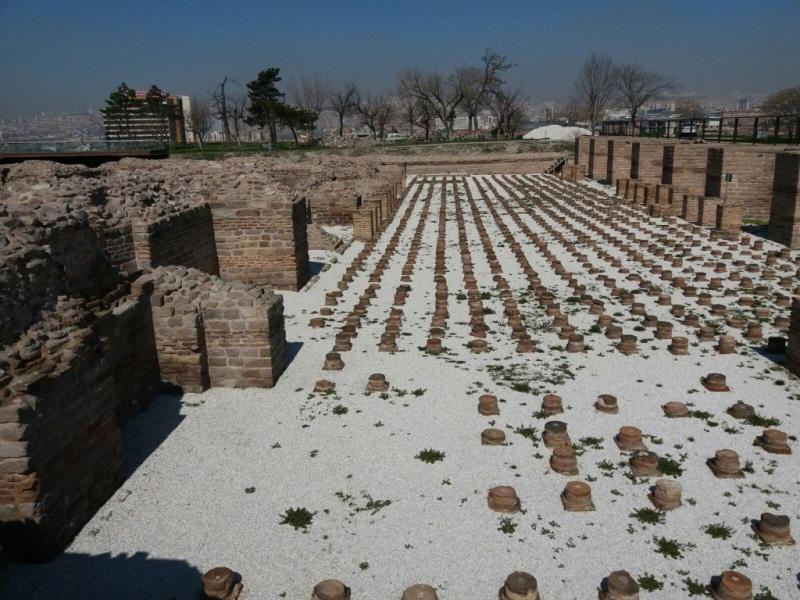
Removed from Unnamed collection
Roman Baths 
The ruins of the Roman Bath, located approximately 400 meters from Ulus, on Çankırı Avenue, stretching from Ulus Square, were completely unearthed by excavations in 1939-1943. With the works carried out between 1997-2001, it has gained the appearance of the Open Air Museum. The Roman Bath III. It is known that it was built by the Roman Emperor Caracalla (212-217) in the 19th century. The building, which was understood to have settled during the Phrygian, Roman, partly Byzantine, Seljuk and Ottoman periods, consists of 2 sections, the Pillared Road and the Hamam Building. https://www.ankaraka.org.tr/tr/roma-hamami-ziyareti_4064.html
Map
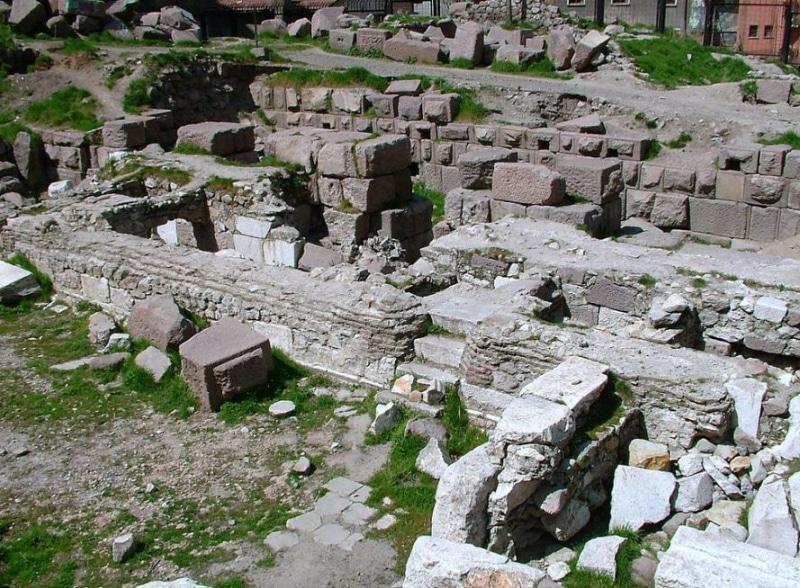
Removed from Unnamed collection
Ancient Theatre of Ankara 
The theatre was built on a semicircular plan, and the hillside of the citadel supported its audience. Two vaulted passages still lead to the orchestra, a semicircular space occupied by the choir during the performances. In the case of the theatre in Ankara, it has a diameter of about 13 meters and is surrounded by a thick wall. Unfortunately, it is not known what material was used for the floor of the orchestra.
A proscenium, i.e. the platform where the actors performed, has also been preserved. Only the northern part of skene, the structure at the back of a theatre stage housing changing rooms and warehouses of props, has survived in Ankara. The choir used the passages called parodoi, of which the eastern one survived to our times in its entirety, and the western one - only in fragments.
The seats in the theatre and radially ascending stairs were made of stones, debris, and plaster. The auditorium was divided into four horizontal sections. It is estimated that the theatre had from 20 to 22 rows of seats and it could accommodate between three and five thousand spectators. Therefore, it is a relatively small example of such a building in Asia Minor. The seats from the audience were later used to build the walls of the citadel, although archaeologists managed to excavate two of them in their original location. They were made of andesite, and their height was about 40 cm. https://turkisharchaeonews.net/object/ancient-theatre-ankara
Map
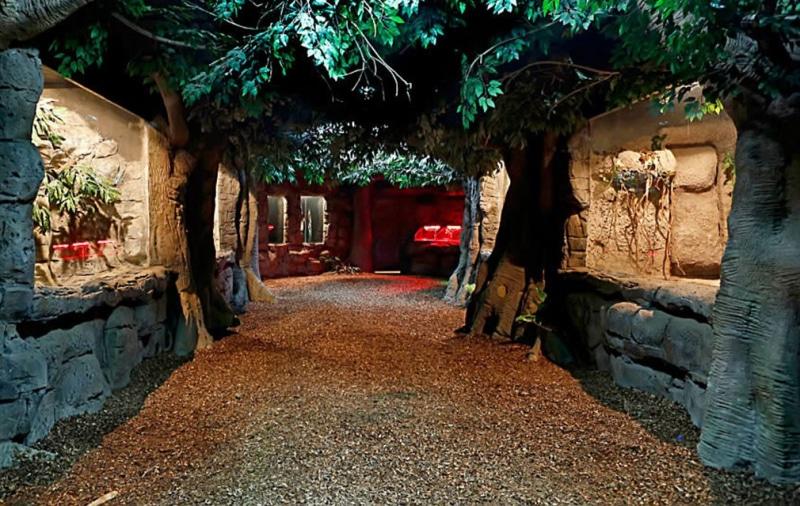
Removed from Unnamed collection
Aqua Vega Aquarium 
Aqua Vega Aquarium is one of Turkey's and Europe's largest tunnel aquariums, with a total capacity of 4.5 million litres of waters and 98 meters in length.
Aqua Vega Aquarium has large and small, consisting of salt and freshwater aquariums with different characteristics. In this atmosphere, you can be guest into the world of fascinating sea creatures from the oceans and rivers of the world.
The world's seas and oceans are still a huge universe waiting to be discovered. You have the opportunity to discover this colourful and peaceful world of the sea creatures with Aqua Vega Aquarium in the center of Ankara. https://www.goturkeytourism.com/things-to-do/aqua-vega-aquarium-ankara.html
Map
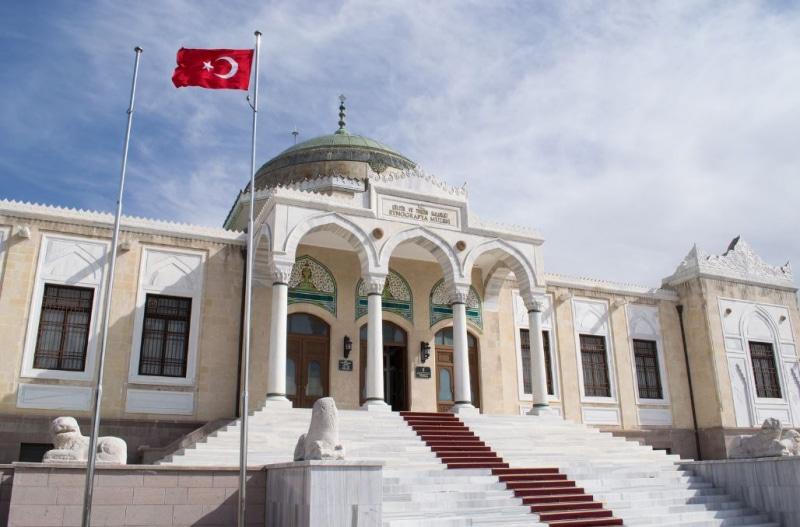
Removed from Unnamed collection
Ethnography Museum of Ankara 
Ethnography Museum of Ankara is the first museum of Turkish Rebuplic which was planned and built by the directive of Atatürk, the great leader. Arif Hikmet Koyunoğlu, the architect of the building, is one of the most valuable architects of the Republican period. The architecture of the Ethnography Museum of Ankara reflects the characteristics of each period of Anatolia from the early ages to the Republic. The Museum which was opened to the public on 18th July 1930 and remained open until the date on November 1938 where the inner courtyard of the museum served as the temporary grave for Atatürk. The Ethnographic Museum of Ankara reopened its doors to the public, owing to the International Museums week, in 6th-14th October 1956.
Ethnography Museum of Ankara contains a rich collection of works which reflect ethnographic aspects of all people lived in Anatolia At the museum, it is possible to see folk costumes, ornaments, Turkish-specific technical materials compiled from various regions of Anatolia as well as the finest examples of Ottoman calligraphic art, Turkish tile and glass art, metalworking art and wooden artefacts. Also exhibited at the Ethnography Museum is a collection of carpets and kilims from the famous carpet weaving centres of Uşak, Bergama, Kula, Milas, Ladik, Karaman, Niğde, and Kırşehir. The museum also has a specialized library on Anatolian ethnography and folklore, containing artefacts available related to the history of art. http://cagdasmuzebilim.ankara.edu.tr/en/ethnography-museum-of-ankara/
Map
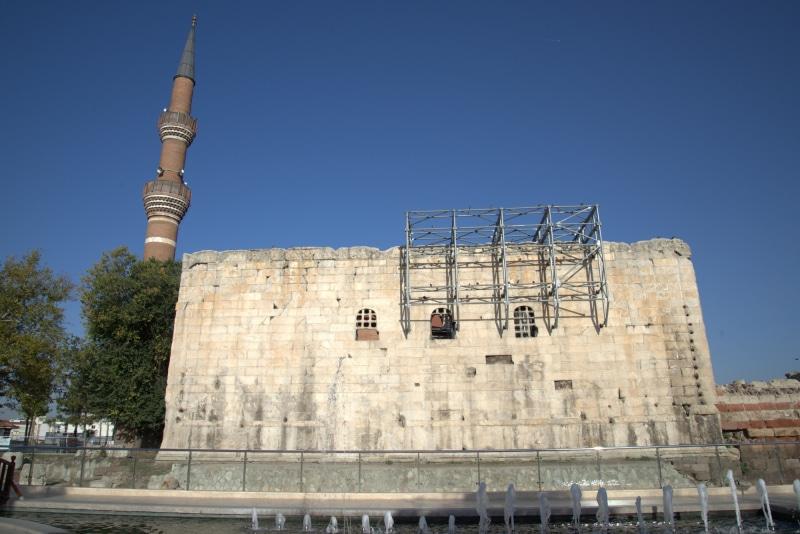
Removed from Unnamed collection
Temple of Augustus Ankara 
The temple of Augustus and Roma in Ankara was erected after the conquest of Central Anatolia by the Roman emperor Octavian Augustus in 25 BCE. The city, then known as Ancyra, became the capital of the newly formed Province of Galatia. After the death of Augustus in 14 CE, a copy of his autobiography entitled "Deeds of the Divine Augustus" was placed on the walls of the temple both in Latin and in Greek translation. There were many such copies the Roman Empire, but nowadays the inscription from Ankara, known as the Monumentum Ancyranum, is an almost completely preserved version of the text. This fact makes it a unique source of knowledge for researchers of this period of history.
In the first half of the 3rd century BCE, the Celtic people from northern Europe reached the Anatolian highlands. Their route went through Macedonia and Greece, and the Greeks began to call them the Galatians. They came to Asia Minor not as invaders, but as mercenaries on the invitation from the king Bithynia, Nikomedes I. He needed their assistance in the fight against his brother, Zipoetes II. https://turkisharchaeonews.net/object/temple-augustus-and-roma-ankara
Map
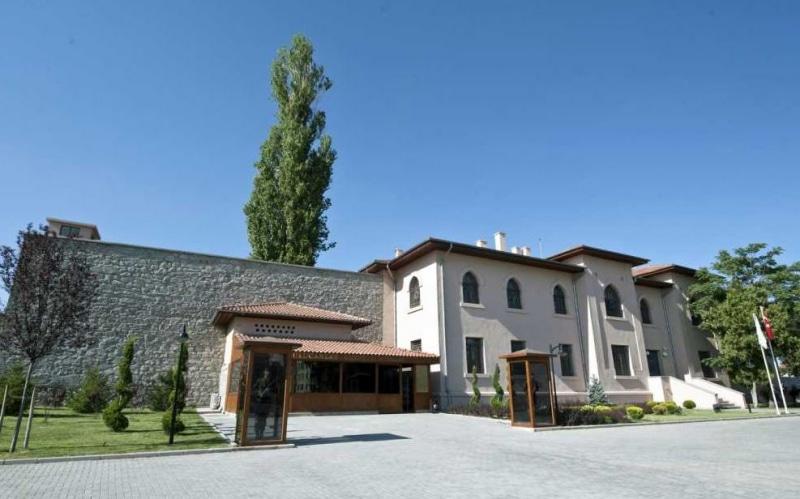
Removed from Unnamed collection
Ulucanlar Prison Museum 
Ulucanlar Prison was established in 1925 and was transferred to Sincan Prison in 2006 and closed. In June 2011, it was repaired by Altındağ Municipality and opened to visitors as Ulucanlar Prison Museum.
In the Ulucanlar Prison Museum, there are courtyards where 81 years of journalists, writers, poets, politicians who have been imprisoned because of their thoughts, their personal belongings and photographs were taken while in prison are exhibited.
Ulucanlar Prison Museum Visiting Hours: 10:00 - 17:00
Ulucanlar Prison Museum Holidays: Monday https://www.kulturportali.gov.tr/turkiye/ankara/gezilecekyer/ulucanlar-cezaev-muzes
Map
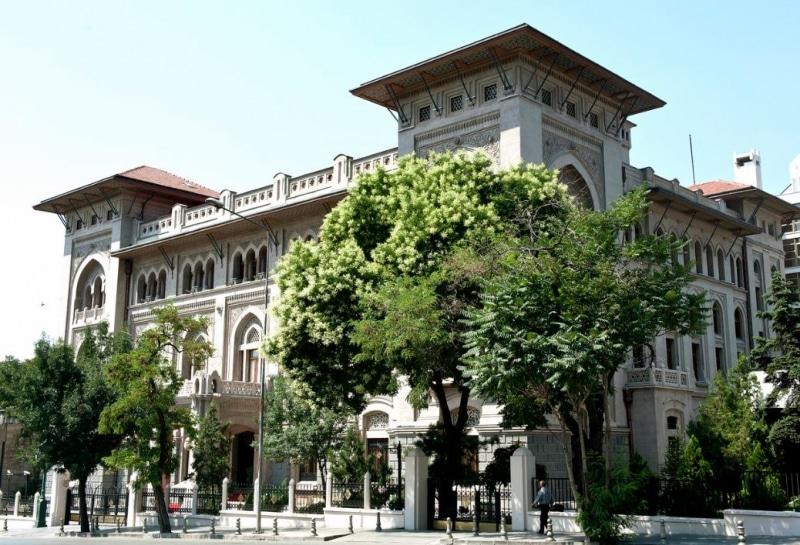
Removed from Unnamed collection
Ziraat Bank Museum 
Ziraat Bank Museum is located in the Honor Hall of the Ziraat Bank Head Office Building, which was built by the Italian architect Giulio Mongeri between 1926-1929 and is one of the structures of the First National Architecture Period. It was opened on November 20, 1981, when the 118th anniversary of the bank was celebrated, by the Advisory Council President Şadi Irmak.
It is the first bank museum in our country. Since its start, Turkey commercial banking system, economic, political, cultural, artistic and showing growth reached up to the present with educational exchange Ziraat Bank Museum, many antique objects used in hosting and banking systems of these properties are exhibited in a historical atmosphere. https://www.kulturportali.gov.tr/turkiye/ankara/gezilecekyer/tc-zraat-bankasi-muzes
Map
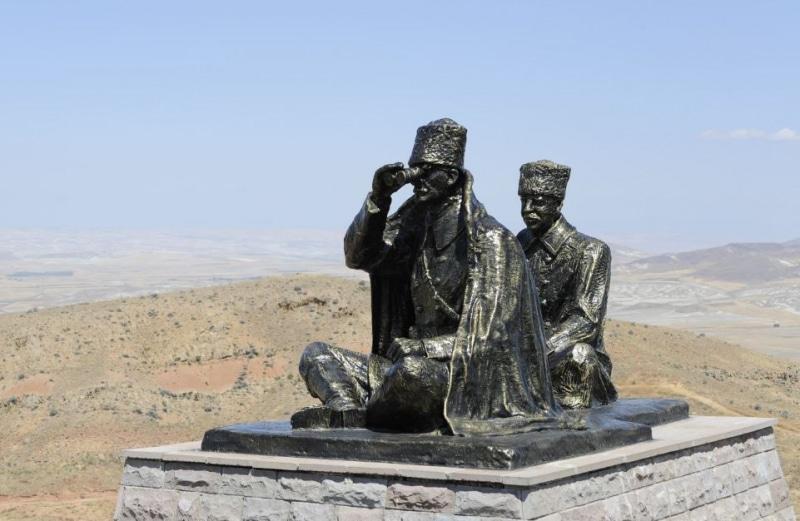
Removed from Unnamed collection
Duatepe Monument 
The Duatepe Monument was built by afforestation of Gazi Tepe, Türbe Tepe and Mangal Mountain on the last line of defence where Sakarya Square War, which is considered the turning point of the War of Independence, was held. Work started in Duatepe in October 1999 and 20 thousand trees were planted and the monument was completed and opened on 12 September 2000. Polatlı, Duatepe Monument consists of five parts: parking lot, connection road, walkway, ceremony area and monument. There is information written in brass letters of 81 martyrs in Duaepe on the walls of the monument. The creator of the monument and sculptures is the State Artist sculptor Metin Yurdanur.
The monument symbolically tells the story of the Anatolian people running to victory and civilization like an enthusiastic river under the leadership of Mustafa Kemal Atatürk. The figure of Mustafa Kemal on his prancing horse expresses the pride and happiness he has become the leader of the Turkish Nation. The sculptures of Atatürk, İnönü and Marshal Fevzi Çakmak, which are in the background, describe the command unit and the statue of Halide Edip Adıvar describes the contribution of the Turkish woman to the War of Independence. The scene where Atatürk and his child watch the plain through binoculars expresses the Turkish nation, which is waiting for the victory to be won a little later and the next independence. https://www.kulturportali.gov.tr/turkiye/ankara/gezilecekyer/duatepe-aniti
Map
Explore more places related to this search:
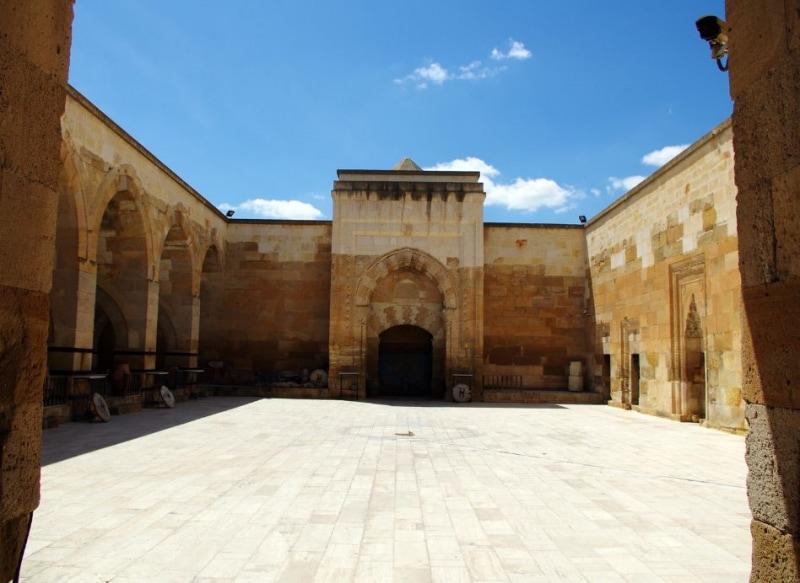
Removed from Unnamed collection
Sultan Han 
Sultan Han Caravanserai is located in the Sultan Hani District of Bünyan District, located on the 46th km of Kayseri-Sivas road. The neighbourhood got its name from this work. It was built between 1232-1236 during the reign of Seljuk Sultan Alaeddin Keykubat I. It is one of the best examples of the Seljuk architect style. Very smooth cut stone was used on the body walls. The joints are very uniform and show a structure called "not to flow". The arch built with the alternating use of beige and brownstone attracts attention at the crown gate of the courtyard. Depending on the stone material, decorations with relief and carving techniques can be seen in the crown doors, two corner towers and Köşk Mescit. https://www.kayseri.bel.tr/kesfet-listeleme/sultan-hani-kervansarayi
Map
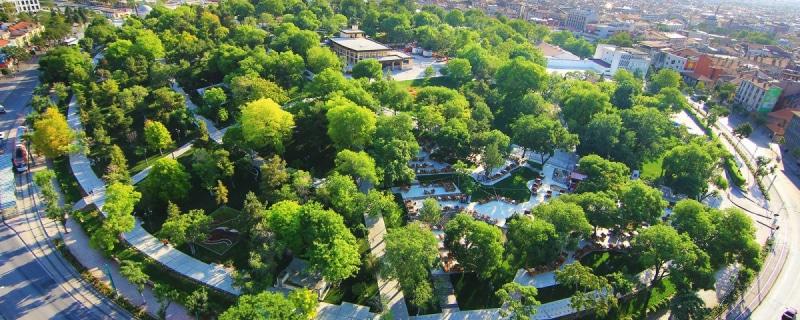
Removed from Unnamed collection
Alaeddin Hill 
The archaeological excavations carried out by Turkish Historical Society in 1941 showed that the first settlement on the hill goes back to 3000 BC, Early Bronze Age. [1] Later on, the hill had also been used as a settlement area during Phrygian, Hellenistic, Roman, Byzantine, Seljuk and Ottoman eras. http://konya.com.tr/en/portfolio-item/alaeddin-tepesi/
Map
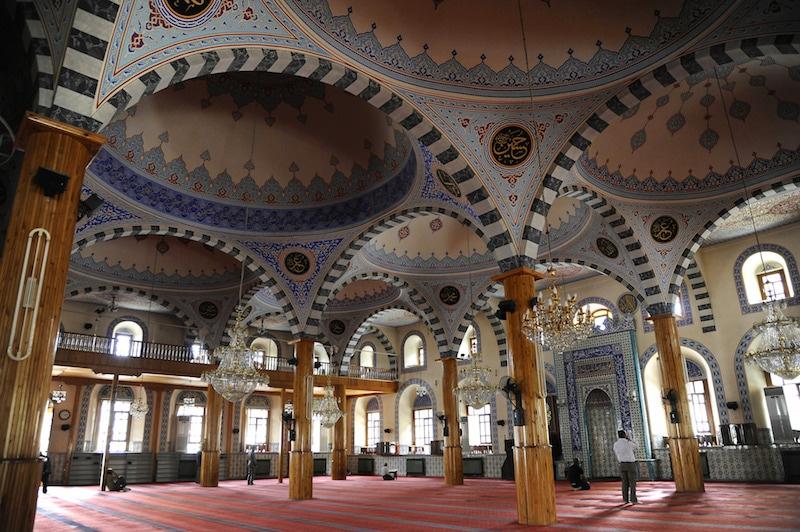
Removed from Unnamed collection
Iplikci Mosque 
One of the known Mosque in Konya. http://turkeytourism.com.my/destinations/konya/
Map
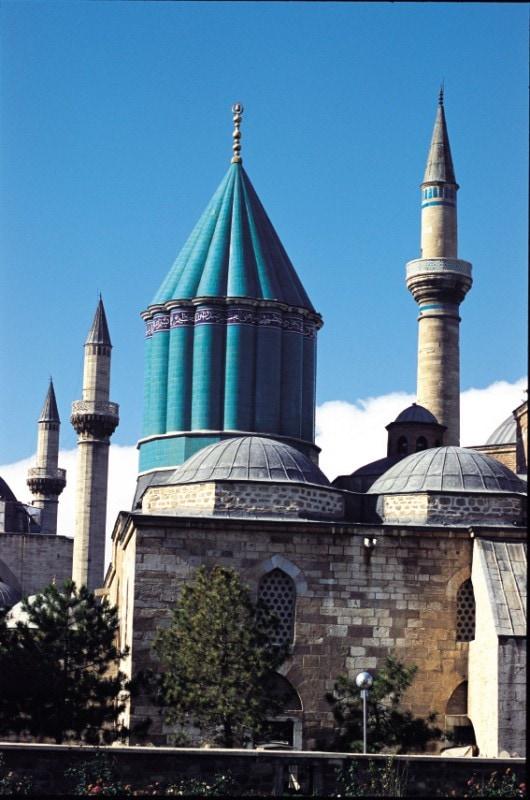
Removed from Unnamed collection
Mevlana Museum 
Mevlevi Derhgahı (Dervish Lodge) and the mausoleum started to function as a museum in 1926 under the name of Konya Museum of Historical Works. In 1954 the display pattern of the museum was once more taken up and it was renamed as the Mevlevi Museum. http://www.kultur.gov.tr/EN,113978/konya---mevlana-museum.html
Map
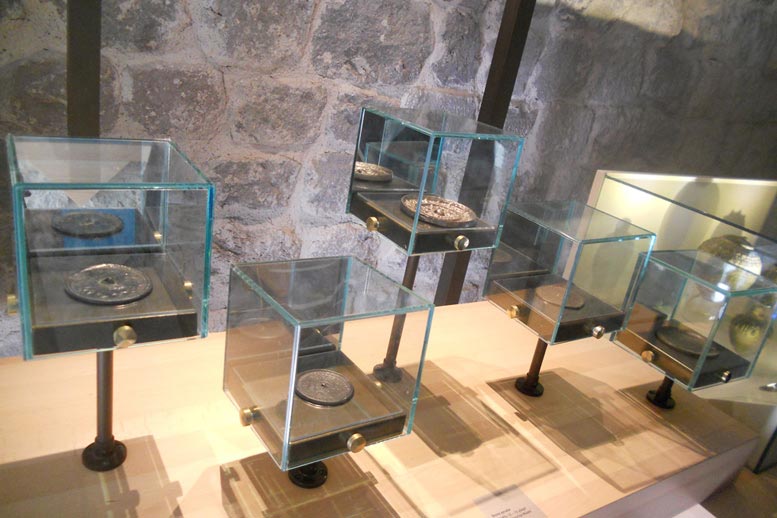
Removed from Unnamed collection
Seljuk Civilization Museum 
Based on the history of the city, the museum, which focuses on the Anatolian medieval and Seljuk Civilization, was planned with a thematic approach. In one part, the museum emphasizes the civilization about the Seljuk Civilization, while the other part brings the feature of healing to the fore. In the section about Seljuk Civilization; There are sections such as 'Seljuk City', 'architecture', 'art', 'science', 'clothing', and 'Seljuks in Kayseri', 'Seljuks in Anatolia'. In the section about Şifahiye; There are sections such as 'diseases', 'treatment methods and instruments', 'scholars', 'medicine', 'water and health', 'music treatment', 'color treatment'.
In addition to the works of the Seljuk and its recent period, there are interactive and technological visual areas in the museum. Thus, our visitors; It receives information about Seljuk Civilization by listening, experimenting, applying and using technological tools. There are also cartoons and various games in our children's room for children to love the museum and Seljuk. There are also places where various concerts and cultural activities will be held in the museum. https://www.kayseri.bel.tr/kesfet-listeleme/selcuklu-uygarligi-muzesi
Map
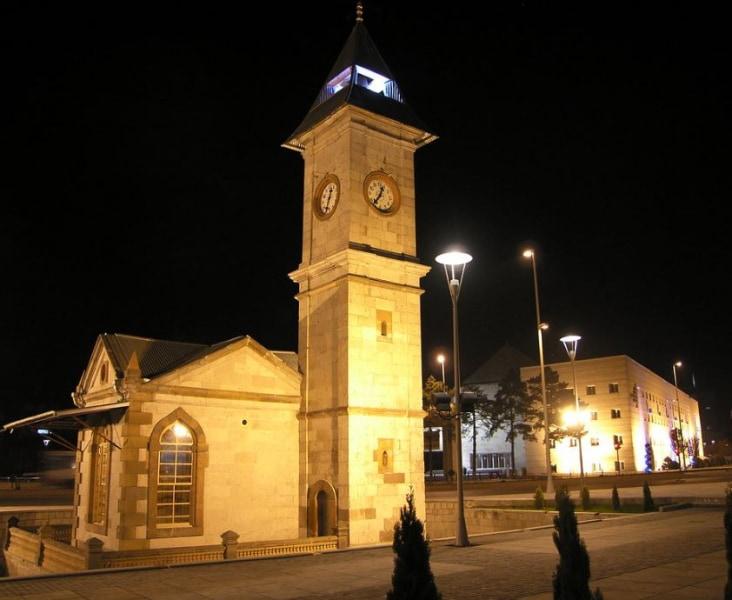
Removed from Unnamed collection
Kayseri Clock Tower 
Clock tower II. It was built in 1906 by Tavlusunlu Salih Usta with the order of Abdülhamit and the support of Kayseri Governor Haydar Bey. The rectangular space next to it was built as a clock room. The 15-meter high tower can be reached by spiral stairs. During the National Struggle period, Anadolu and Rumeli Müdafaa-i Hukuk Cemlığı were used as Kayseri Branch. There is a rectangular opening in the pointed pyramidal cone section covering the tower and a clock bell inside it.
Constructed of cut stone, the structure is divided into three sections with transversely arranged mouldings. There are circular openings arranged for the clock on each side of the upper section. https://www.kayseri.bel.tr/kesfet-listeleme/saat-kulesi
Map
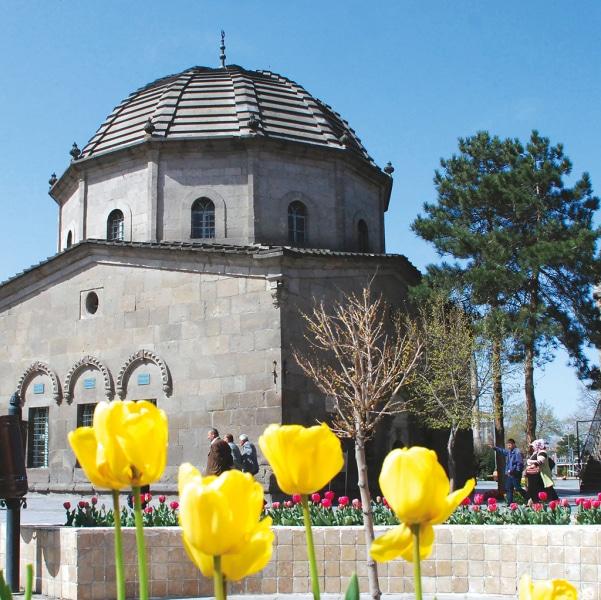
Removed from Unnamed collection
Zeynel Abidin Tomb 
It is known that Zeynel Abidin, one of the prominent of the Rufai Sect, built a lodge, mosque and fountain in the environment where the tomb is today. Known as Imam Sultan in Kayseri, Zeynel Abidin died in Kayseri in 1414 and a modest mausoleum was built on the grave at the present place. II. In the time of Abdulhamit, in 1886, the existing tomb was built in the place where Zeynel Abidin's grave was located. The tomb is a square planned structure and is covered with a dome. There are two lines of couplets on all the windows of the building with three windows on each side. There is a sarcophagus of Zeynel Abidin in the middle of the tomb. In the building inscription on the entrance door of the building, it is engraved on an oval medallion. https://www.kayseri.bel.tr/kesfet-listeleme/zeynel-abidin-turbesi
Map
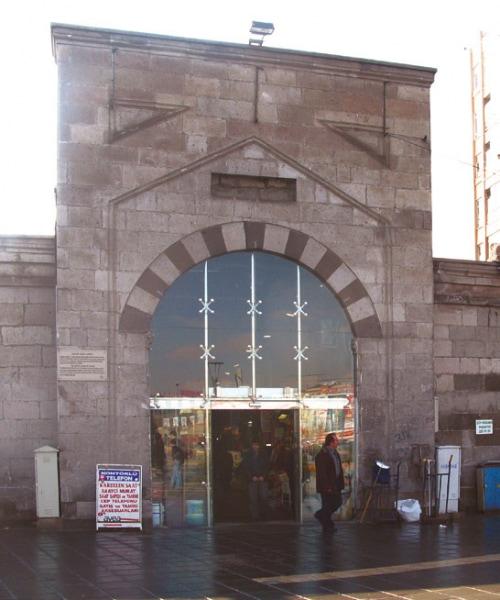
Removed from Unnamed collection
Grand Bazaar Kayseri 
It is estimated that the building, which was considered as the largest closed market after Istanbul in the Ottoman period, was built in the 15th century. The only inscription in the building, which contains many bazaars with different names, is located in the bazaar built by Hacı Efendi in 1844. The bazaar, almost all of which was burnt as a result of the fire in 1870, was rebuilt with stone materials with the efforts of Osman Pasha of Maraş. The building is referred to as the "magnificent masonry market" that covers more than two thousand shops and shops in the 1907 Ankara Yearbook.
The Grand Bazaar still houses shops where local food and handicrafts are sold. https://www.kayseri.bel.tr/kesfet-listeleme/kapali-carsi
Map
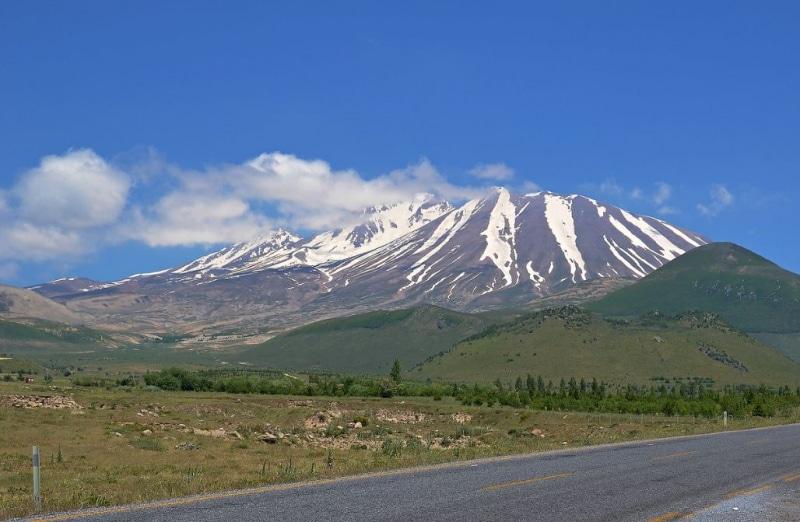
Removed from Unnamed collection
Mount Erciyes 
Erciyes, with an elevation of 3916 meters, is a volcanic mountain whose summit is always covered with snow and fog and has become synonymous with the city of Kayseri. This lava-spewing mountain, responsible for the 'fairy-chimney' rock formations in nearby Cappadocia, impressed the Meek people living at its base so much that their coins bear an impression of the mountain with lava boiling out of the top. The first person to successfully make the summit was W. J. Hamilton in 1837, and the first Turk was Miralay Cemil Cahit Bey in 1924.
Besides being a popular spot for mountain climbers, it is also one of Turkey's best winter-sport resorts. From the top of the mountain, if the weather is clear, there is a stunning view of an area stretching from Cappadocia to the Taurus Mountains. http://www.kultur.gov.tr/EN,99413/kayseri---mount-erciyes.html
Map
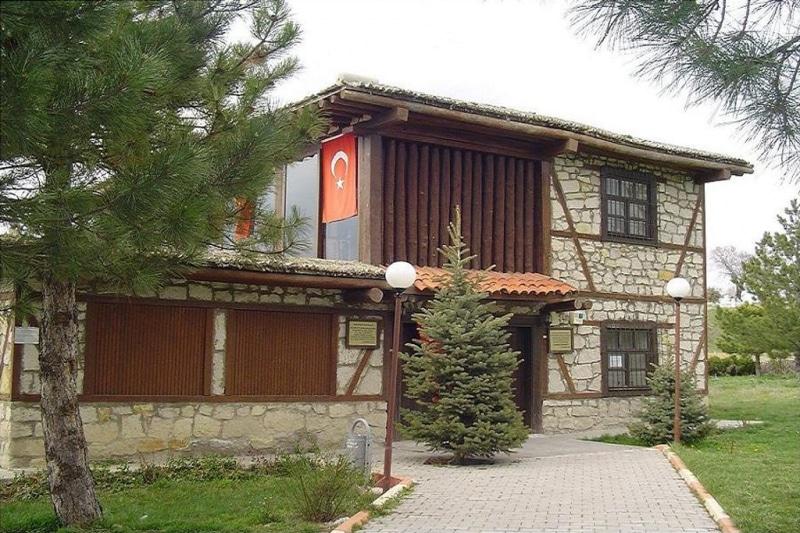
Removed from Unnamed collection
Dumlupinar Atatuerk House Museum 
The site is the house that Head Commander Gazi Mustafa Kemal Atatürk stayed in during the War of Independence, and it was also used as the Dumlupınar HQ. The house has been fully restored to its original state and was opened to visitors on August 30, 2003. http://kutahyacreativecity.com/museums-and-archeological-sites/
Map
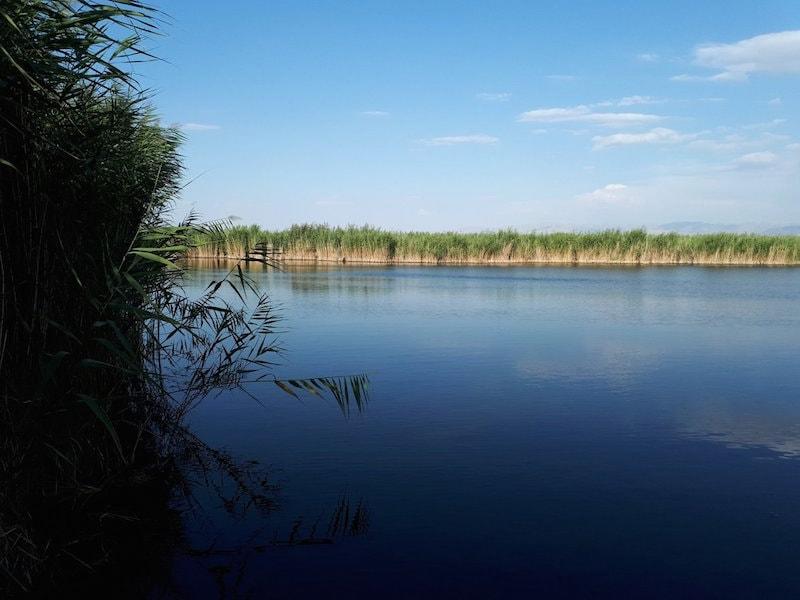
Removed from Unnamed collection
Sultansazligi Nature Reserve 
The area is between Yesilhisar and Yahyali in the province of Kayseri, and consists of four different locations: Yay Lake (3650 hectares), Kebir Sazligi (1900 hectares), (Sultansazligi (3300 hectares) and Otluk Alan (8350 hectares). http://www.kultur.gov.tr/EN,99906/kayseri---sultansazligi-nature-reserve.html
Map
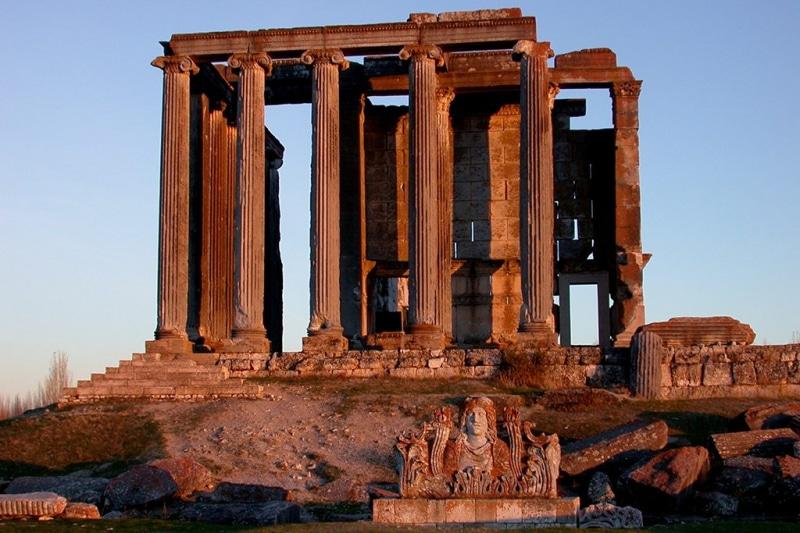
Removed from Unnamed collection
The Ancient Aizonai 
The ancient city is situated southwest of Kütahya,in Çavdarhisar. The settlement dates back to 3000 BC.Aizanoi was settled on the two banks of River Rhyndakos that flowed through the region called ‘Phyrgia Epiktetus’(little Phyrgia)in ancient times. The name Aizanoi comes from the word eksouanous http://kutahyacreativecity.com/museums-and-archeological-sites/
Map
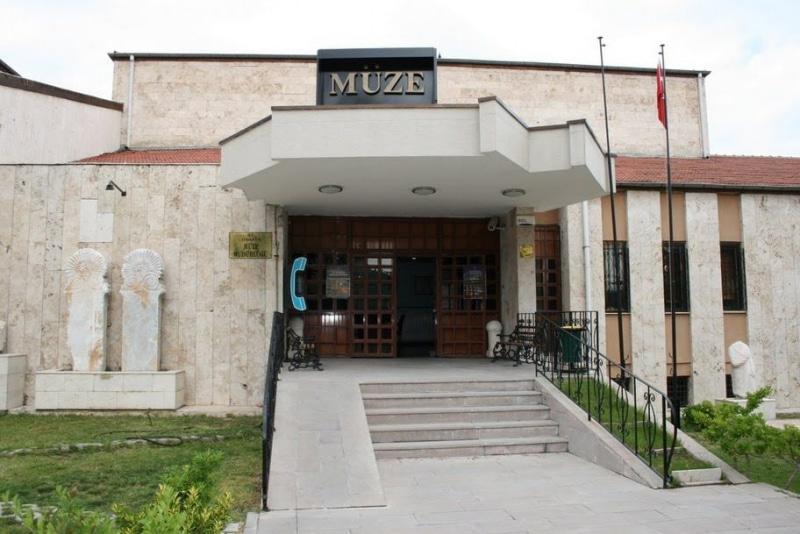
Removed from Unnamed collection
Isparta Museum 
A must in Isparta is the Isparta museum. Here you can see excavations from the Persian, Ottoman and Roman times. The museum has four halls: archeology, excavations, ethnography and carpets. https://www.nederlandersinturkije.nl/bezienswaardigheden/isparta-muzesi-museum/
Map

Removed from Unnamed collection
Isparta mosque 
Isparta historical State han mosque is well known tourist attraction. https://www.mumsema.org/camiler-ve-mescit-resimleri/281985-isparta-camileri.html
Map
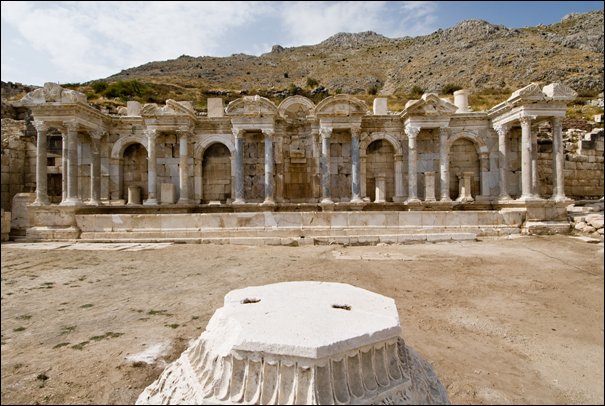
Removed from Unnamed collection
Sagalassos Ancient City (Burdur) 
The ancient city of Sagalassos is located in the region known as Pisidia in antiquity. Situated at the edge of a mountainous area, the first settlement traces date back to 12,000 years ago. The ancient city of Sagalassos is extremely well preserved with its monumental structures where almost all of the original building stones can be found. http://www.kulturvarliklari.gov.tr/TR,44412/sagalassos-antik-kenti-burdur.html
Map
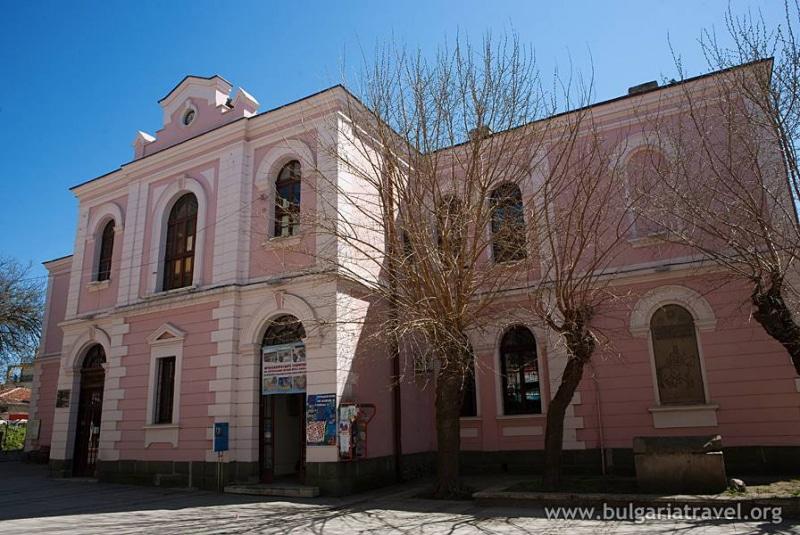
Removed from Unnamed collection
Archeological Museum 
The Archeological Museum is located in a former girls’ school that was built in 1894. It was designed by the Swiss architect Herman Maier, who also designed banks in Sofia, Plovdiv, and Russe. http://bulgariatravel.org/en/object/214/Arheologicheski_muzej_Burgas
Map
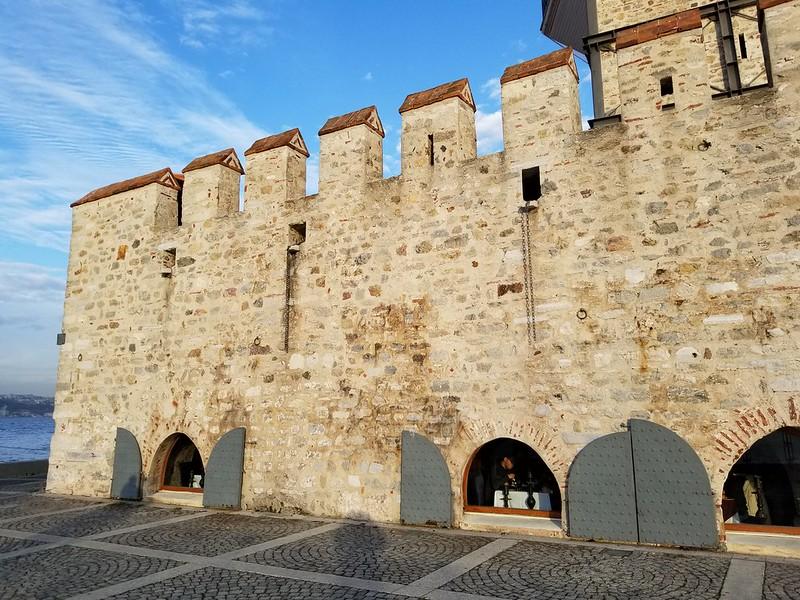
Removed from Unnamed collection
The Maiden Tower 
Kizkulesi is located off the coast of Salacak neighbourhood in Üsküdar district, at the southern entrance of the Bosphorus. It literally means "Maiden's Tower" in Turkish. The name comes from a legend: the Byzantine emperor heard a prophecy telling him that his beloved daughter would die at the age of 18 by a snake. So he decided to put her in this tower built on a rock on the Bosphorus isolated from the land thus no snake could kill her. But she couldn't escape from her destiny, after all, a snake hidden in a fruit basket brought from the city bit the princess and killed her.
Kizkulesi is dating back to the 5th century BC when it was built by the Athenian general Alcibiades on a rock at the entrance of the Bosphorus for the surveillance of the waterway. A chain was pulled from the land to the tower to make it a checkpoint and customs area for the ships going through.
Today, Kizkulesi is a very popular and classy restaurant and cafeteria-bar. It offers 360-degree views of the Bosphorus and the old city, especially at night. There are several shuttle boats going to the tower at certain times from Kabatas neighbourhood on the European side of Istanbul and from Salacak neighbourhood on the Asian side. http://www.greatistanbul.com/kizkulesi.html
Map
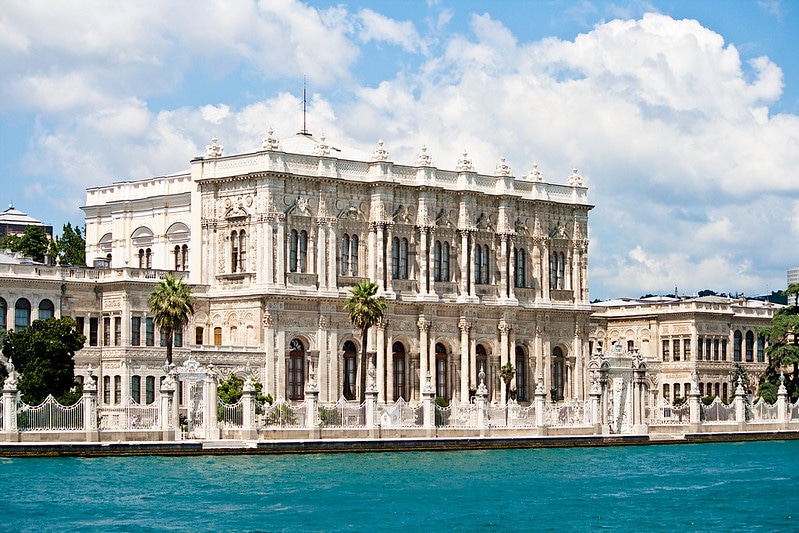
Removed from Unnamed collection
Dolmabahce Palace 
Dolmabahce Palace built in 19 th century is one of the most glamorous palaces in the world. It was the administrative centre of the late Ottoman Empire with the last of Ottoman Sultans was residing there. After the foundation of the Turkish Republic in Ankara, Mustafa Kemal Ataturk transferred all government functions to the youthful capital but on his visits to Istanbul Ataturk occupied only a small room at Dolmabahce Palace as his own. He stayed, welcomed his foreign guests and made a practical centre for national, historical and language congress and for international conferences. http://www.dolmabahcepalace.com/
Map
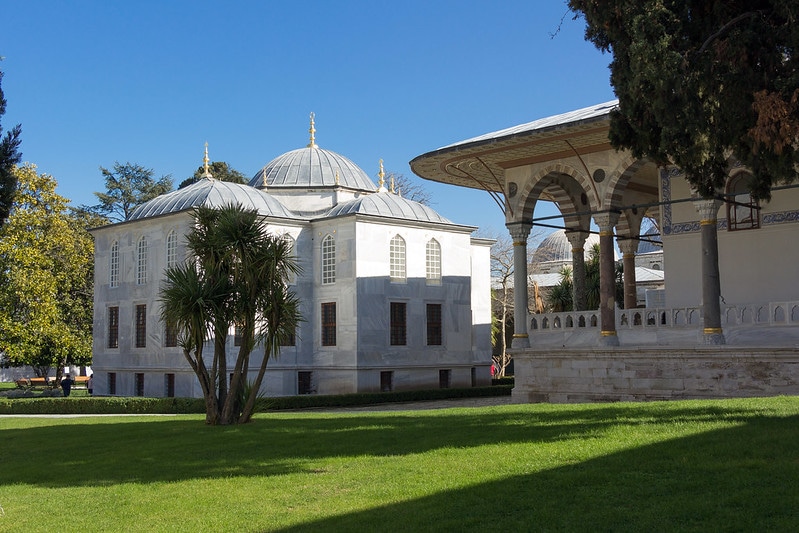
Removed from Unnamed collection
Topkapi Palace Museum 
It is located on the promontory of the historical peninsula in İstanbul which overlooks both the Marmara Sea and the İstanbul strait. The walls enclosing the palace grounds, the main gate on the land side and the first buildings were constructed during the time of Fatih Sultan Mehmet (the Conqueror) (1451 - 81). The palace has taken its present layout with the addition of new structures in the later centuries. Topkapı Palace was the official residence of the Ottoman Sultans, starting with Fatih Sultan Mehmet until 1856, when Abdülmecid moved to the Dolmabahçe Palace, functioned as the administrative centre of the state. The Enderun section also gained importance as a school. Topkapı Palace was converted to a museum in 1924. Parts of the Palace such as the Harem, Baghdad Pavilion, Revan Pavilion, Sofa Pavilion, and the Audience Chamber distinguish themselves with their architectural assets, while in other sections artefacts are displayed which reflect the palace life. The museum also has collections from various donations and a library.https://muze.gen.tr/muze-detay/topkapi
Map
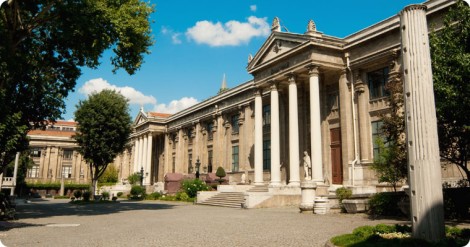
Removed from Unnamed collection
Istanbul Archaeology Museum 
The Istanbul Archaeological Museums is among the most impressive historical venues for your outdoor events and made up of three main units: the Istanbul Archaeological Musuems, the Ancient Orient Museum and Tiled Kiosk Museum. The collection of the Archaeology Museum Turkey’s first museum houses over one million artifacts belonging various cultures collected from the imperial territories. http://icvb.org.tr/istanbul-at-a-glance/
Map
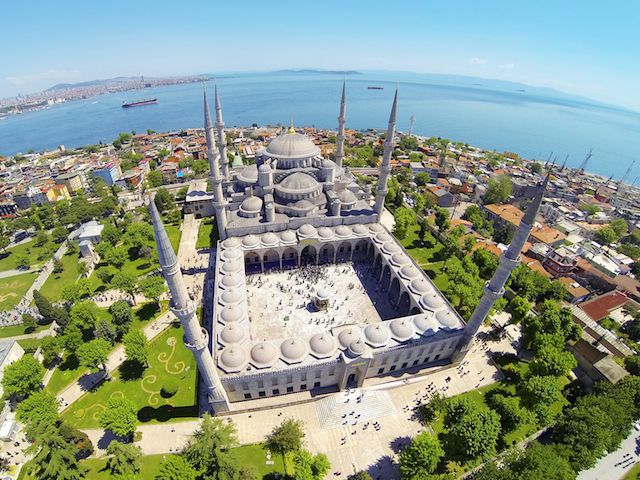
Removed from Unnamed collection
Blue Mosque 
The Blue Mosque (Called Sultanahmet Camii in Turkish) is an historical mosque in Istanbul. The mosque is known as the Blue Mosque because of blue tiles surrounding the walls of interior design.Mosque was built between 1609 and 1616 years, during the rule of Ahmed I. just like many other mosques, it also comprises a tomb of the founder, a madrasa and a hospice.Besides still used as a mosque, the Sultan Ahmed Mosque has also become a popular tourist attraction in Istanbul.
Besides being tourist attraction, it's also a active mosque, so it's closed to non worshippers for a half hour or so during the five daily prayers.
Best way to see great architecture of the Blue Mosque is to approach it from the Hippodrome. (West side of the mosque) As if you are non-Muslim visitor, you also have to use same direction to enter the Mosque. http://www.bluemosque.co/
Map
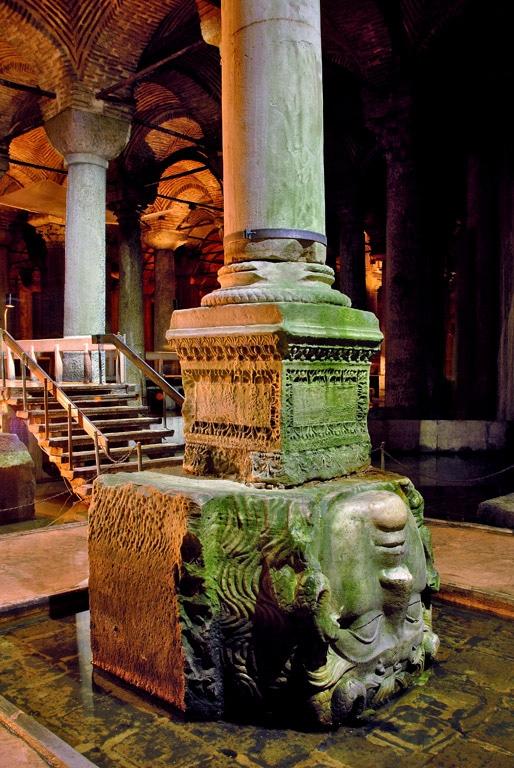
Removed from Unnamed collection
Basilica Cistern 
One of the magnificent ancient buildings of İstanbul is the Basilica Cistern located in the southwest of Hagia Sofia. Constructed for Justinianus I, the Byzantium Emperor (527-565), this big underground water reservoir is called as “Yerebatan Cistern” among the public because of the underground marble columns. As there used to be a basilica in the place of the cistern, it is also called Basilica Cistern.
The cistern is a giant structure covering a rectangular area of 140 meters in length and 70 meters in width. Covering a total area of 9,800 m2, this cistern has a storage capacity of approximately 100,000 tons of water. There are 336 columns, each 9 meters high, inside this cistern, which is descended by a 52-step stone staircase. These columns, erected at intervals of 4.80 meters, form 12 rows of 28 columns each. Most of the columns, which are understood to have been collected from older structures, were carved from various types of marble and consisted of one piece and two pieces. The walls of the cistern, 4.80 meters thick, made of bricks and the brick-paved floor, were plastered with a thick layer of Horasan mortar and made water impermeable. http://yerebatan.com/
Map
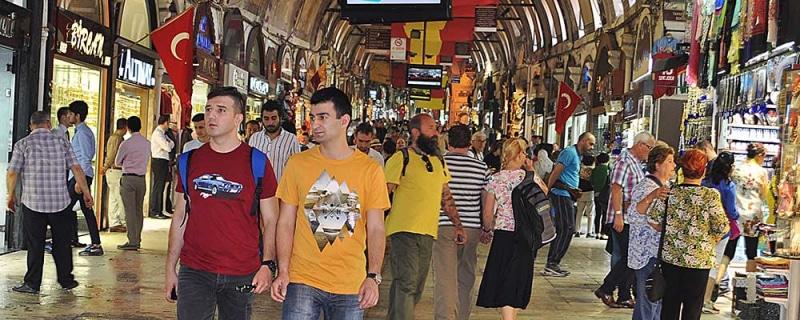
Removed from Unnamed collection
Grand Bazaar 
With its 66 streets and over 4000 shops, the Grand Bazaar is the biggest covered bazaar in the world. The Grand Bazaar (Kapalı Çarşı in Turkish) is an overwhelming experience for many. Sellers hawk their wares at the top of the voice, everyone has their own technique to entice you in, the colors, lights and sounds create an exotic and unique atmosphere. http://kapalicarsi.com.tr/tr/
Map
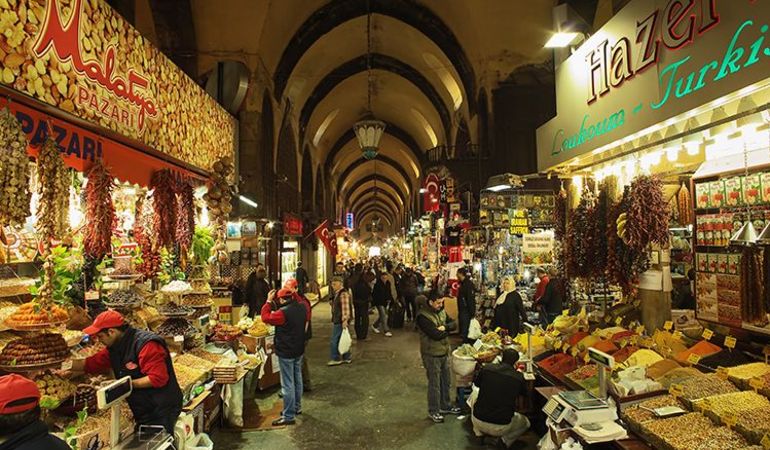
Removed from Unnamed collection
Spice Bazaar 
No visit to Istanbul is complete without stopping by the atmospheric Spice Bazaar. While the Grand Bazaar may be the largest and most famous of Istanbul's covered bazaars, this spice market wins the prize for being the most colorful, fragrant, and often the most fun – as visitors can taste the goods on offer. https://istanbultourstudio.com/things-to-do/spice-bazaar
Map
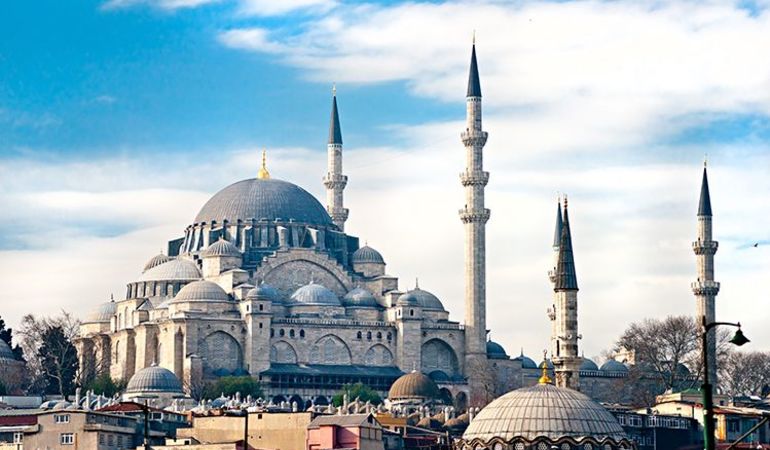
Removed from Unnamed collection
Suleymaniye Mosque 
Süleymaniye Mosque built on top of the third hill of historical Istanbul is one of the biggest mosques of the city.
The truly staggering size of the Süleymaniye Camii (Suleymaniye Mosque) is one of its most distinctive features – built by the legendary architect, Mimar Sinan, it is known as one of his masterpieces, and his largest design. It is not just the awe-inspiring size that is impressive (the central dome stands 47m high), but also the elegantly decorated interior. The sense of space and light is emphasized the supporting semi-domes to the northwest and southeast and the monumental arched spaces to the southwest and northeast. https://istanbultourstudio.com/things-to-do/suleymaniye-mosque
Map
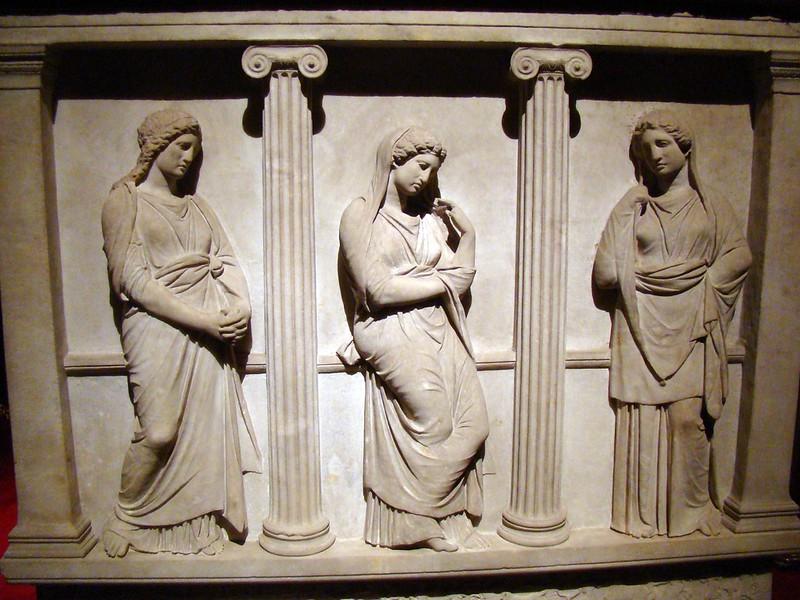
Removed from Unnamed collection
Istanbul Archaeological Museum 
The Istanbul Archaeological Museums is among the most impressive historical venues for your outdoor events and made up of three main units: the Istanbul Archaeological Museum, the Ancient Orient Museum and Tiled Kiosk Museum. The collection of the Archaeology Museum Turkey’s first museum houses over one million artefacts belonging to various cultures collected from the imperial territories. The Archaeological Museum was founded on June 13, 1891, under the name of Müze-i Hümayun (the Imperial Museum). Commissioned by archaeologist, painter and curator. http://icvb.org.tr/venue/istanbul-archaeological-museums/
Map
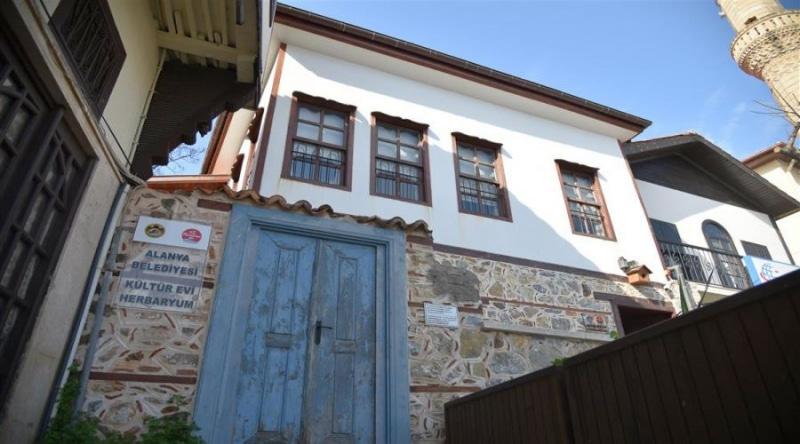
Removed from Unnamed collection
Herbarium Museum 
Herbarium museum has been opened in Alanya in 2012 by Alanya municipality.
There are 151 plants and 90 different insects. http://www.visitalanya.com/my-posts/herbarium-museum-alanya/
Map
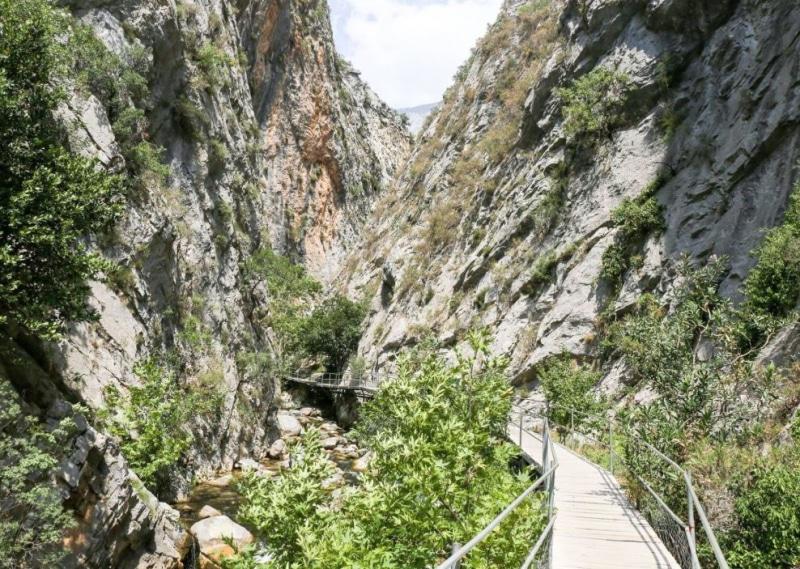
Removed from Unnamed collection
Sapadere Canyon 
Sapadere Canyon is a natural sight definitely worth seeing if you like nature and walking. The canyon was opened in 2008, until then it was only known by locals living in the area. It is app. 800m long and 400m high and it was formed by water, ice and wind erosion. You will be amazed by the picturesque nature scenes, numerous small waterfalls rushing over stones, various plants and aminals, especially birds and butterflies.
Even the air in Sapadere Canyon is different from the coast, its more fresh which offeres a nice break in summer heat. Moreover, the turkuaz water in the river is rarely over 10 degrees celsius even though the air reaches 30+. There is an opportunity to jump into the natural water pool at the end of the path or walk down the stairs to try the water yourself. A wooden environment friendly platform has been constructed along the river for visitors.
You can take an individual trip to Sapadere Canyon, take a taxi or join an organised tour. If you drive yourself, go app. 20Km east from Alanya centre and then turn left to Demirtas village, drive up the village and then follow the signes until the Sapadere Canyon. http://www.visitalanya.com/amazing-nature-in-alanya-sapadere-canyon/
Map
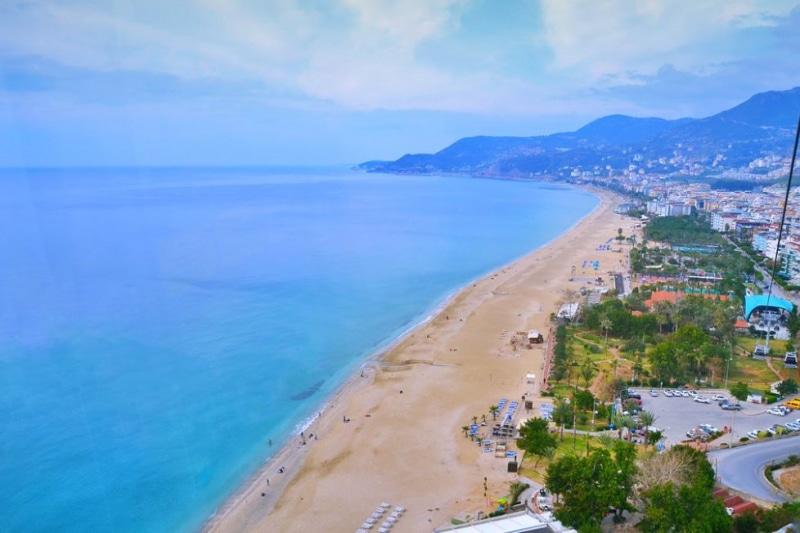
Removed from Unnamed collection
Cleopatra Beach 
The most famous beach of Alanya which got its name after the Egyptian Queen Cleopatra. The Queen was so charmed by the beauty of the beach that she used to stop by during her voyage in the Mediterranean to swim in waters near this beach.
The Cleopatra Beach is app. 2 km long with fine sand on the beach and in the sea. The water is clear blue and it reaches a depth of an adult human within first 4 – 5 steps. The beach offers many facilities including sunbeds and umbrellas for rent, beach bars, water sports, volleyball courts and a nice walkway along the beach. There are several beach clubs with fine food, drinks, music and comfortable seats and pergolas to spend your whole day too. You can enjoy a great view of the Alanya castle and unforgettable sunsets on the Cleopatra beach in Alanya. http://www.visitalanya.com/cleopatra-beach-of-alanya/
Map
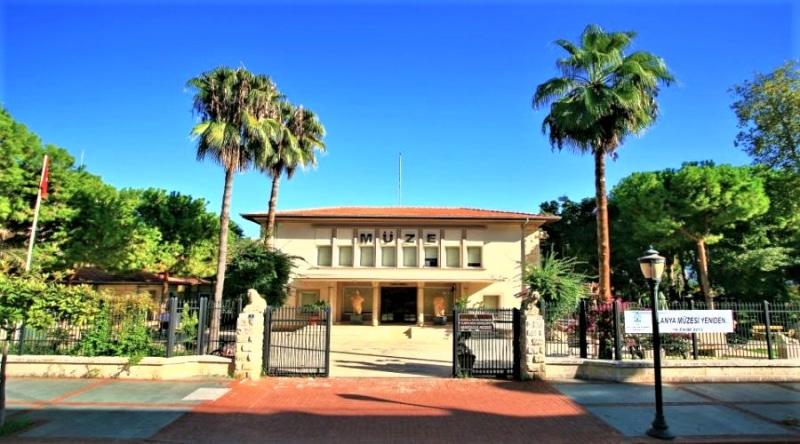
Removed from Unnamed collection
Alanya Archaeological Museum 
Museum has been opened in 1967.
Museum opened as archeological and ethnography museum. But after the Atatürk house and museum designing, the museum became Alanya Archaeological Museum at 2010 . http://www.visitalanya.com/my-posts/alanya-archaeological-museum/
Map
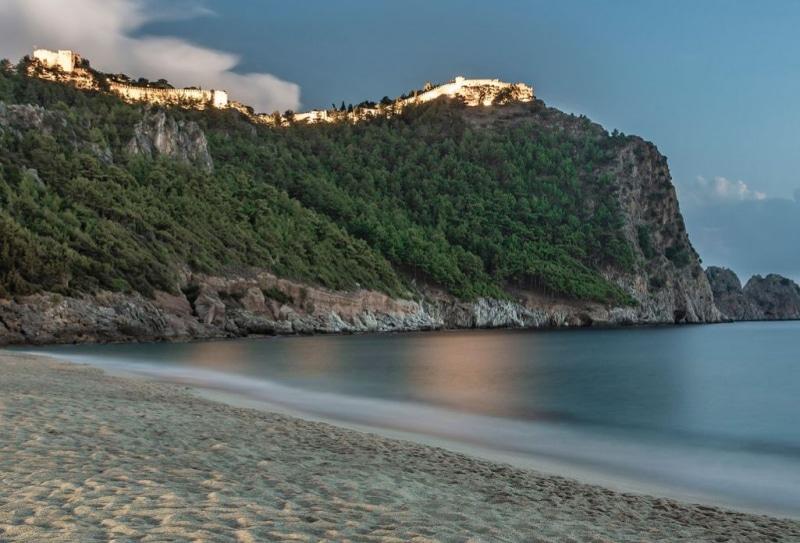
Removed from Unnamed collection
Damlatas Beach 
Damlataş beach in the eastern part of the Cleopatra beach situated just under the peninsula with the It is suitable for snorkelling and there are daily diving boats coming to dive in the area as well.
The Damlataş beach is quite wide with golden fine sand. There are several beach bars, restaurants, volleyball courts, open-air fitness centre, huge children playground, tennis and basketball courts and wonderful green parks with fountains along the beach. There is the Damlataş Cave just a few steps from the beach. The Damlataş beach is currently the only fully wheelchair friendly beach in Alanya offering easy access, wheelchair sunbeds and showers for disabled people. It is famous for its clear water and possibility to swim along the rocky shore of the peninsula with several caves. http://www.visitalanya.com/damlatas-beach-in-alanya/
Map

Removed from Unnamed collection
Damlatas Cave 
It was found in 1948 by accidantelly while getting stones for Alanya harbour. After that opned for public.It is one of the first cave which was opened for touristic reason in Turkey. http://www.visitalanya.com/damlatas-cave/
Map
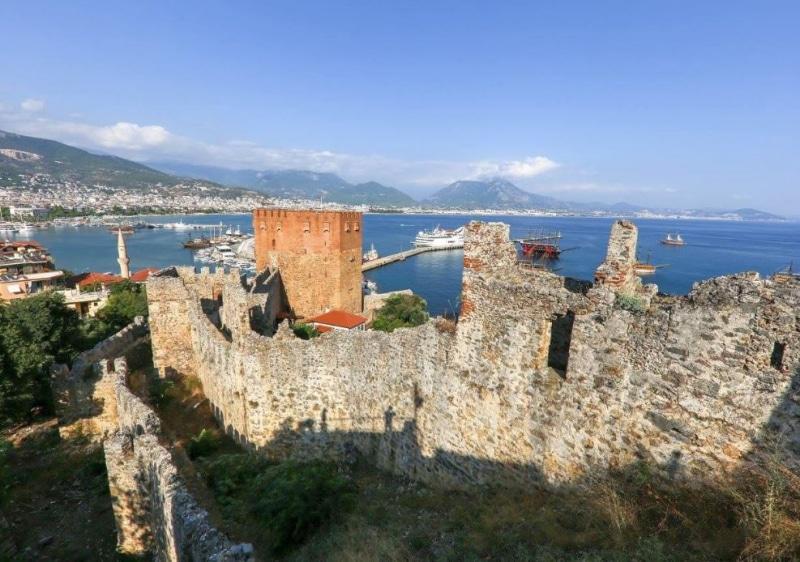
Removed from Unnamed collection
Alanya Castle 
One of the symbols of Alanya – the Alanya castle over the rocky peninsula in the middle of the city. The fortress that you can see today is a remain of 13th century Seljuk fortress built after the conquest of Alanya in 1220 by Alaeddin Keykubat I.
However, the very first fortifications have most probably been built by pirates occupying the peninsula in 3rd century BC and later replaced and improved into Byzantine and Roman fortifications over the centuries. The latest Seljuk Alanya castle is app. 250m over the sea level and its walls have great 6,5km in length. There used to be 140 towers along the walls and around 400 cisterns in the castle.
The fortifications formed three separated divisions – one for the sultan and his family, one for the army and one for the ordinary people. During the Ottoman era, the Alanya castle was used only for defensive purposes and there were many private villas built within the fortress in the 19th century. http://www.visitalanya.com/discover-alanya-castle/
Map
